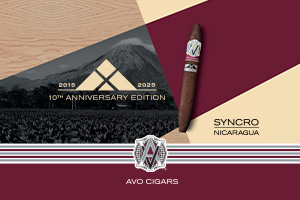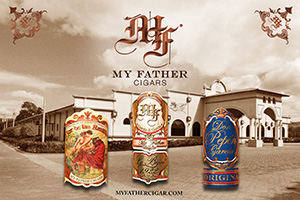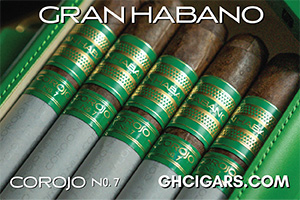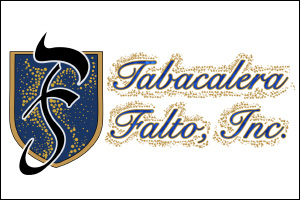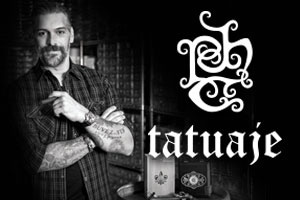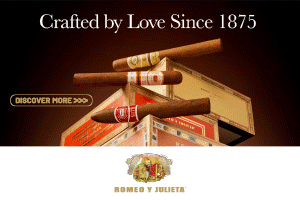Jose and Enrique Seijas Interview
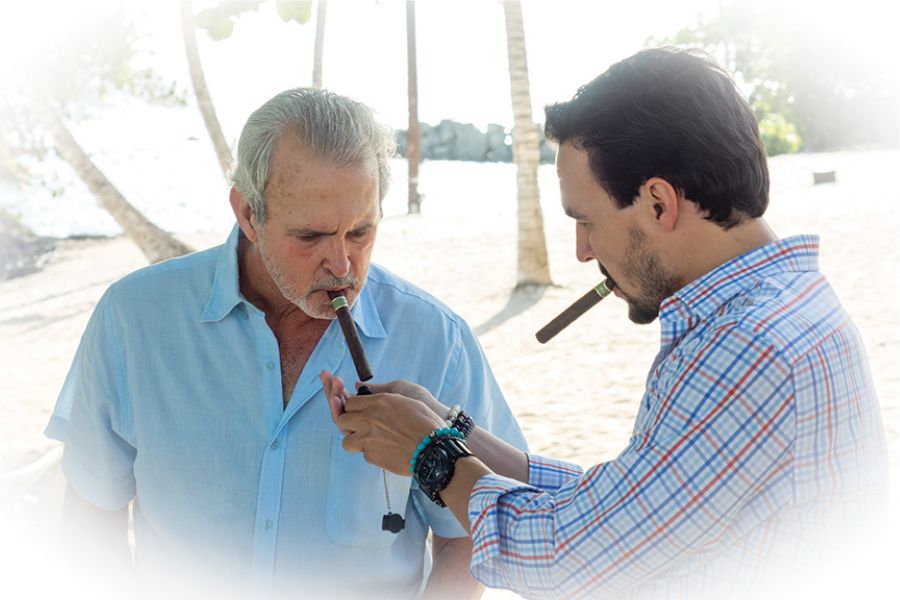 Cigar Press – Matilde is a strong woman’s name. Why was that name chosen?
Cigar Press – Matilde is a strong woman’s name. Why was that name chosen?
Jose Seijas – We were looking for a name that we didn’t have. I could not take my name with me due to contractual obligations after I left the last company I worked for. They continue to own the rights to the Seijas name. So we needed to find a name. Our old partner found in Santiago the Matilde story of how an old family came into the Santiago area and built a cigar factory. The name is in homage to Matilde, a lady of the 1800’s who had this factory which eventually was closed down in the early 1900’s, and was purchased by the tabacalera of the government.
Enrique Seijas – As Dad was saying, the Matilde brand was an old brand. It was an old tobacco company, founded in 1876 in Santiago. We had the choice to create a brand from scratch, or revive a brand that had previously been in existence. We liked the idea of reviving something that was Dominican. As you know we are Dominican and love Dominican tobacco. This was something extra Dominican, so we decided to go with Matilde. We only took the name Matilde, but the branding was designed for us. We named our first blend Matilde Renacer, which means reborn in Spanish. We thought this was a cool name for the first line. Not only because it is a rebirth of this brand, but also a rebirth of my father in a different way of working. Coming from a corporation and making 50 million cigars to working with his children and making 200,000 cigars. It was a change of place, and a change of life – something different and cool.
CP – You said children, is it more than just you?
ES – Initially, it was me and my brother Ricardo. Right now, it is just me and Dad. My brother is now in between, but I believe he is going to go back to Europe with his wife. Hopefully in the future when distribution is opened to Europe, maybe he will join again to do some of the selling and distribution there.
CP – As a question to both of you: Jose – What have you seen going from corporate cigar culture to boutique culture. Enrique – What have you seen in your father during this transition?

JS – The big challenge that we had to start with was bringing to the table something that we all liked. While making sure that we all wanted to take it in the same direction. That didn’t happen so easily. Everybody has their own thoughts. Mine was how to do things. Dealing with Enrique sometimes is impossible, and him dealing with me is sometimes impossible as well. “I am your son,” said Enrique. Carmen (wife and mother) said, “I cannot kill him you know?” then Enrique replied “Thank God.” Then, we started great, everything was falling into place. There was a point in which the planning of production was not in line with what was happening in reality and we ended up with a large inventory. We ended up with a financial problem that we needed to solve. However, we are confident that we have solved that. That was the first challenge; how to get everybody on the same page. The other side was my strength of the day to day operation. Not because I am better than everybody, but because this is what I have done for most of my life. So we saw that we had a problem, but we also saw that we knew how to solve it. The solution was to cut production and bring inventory down. We are working like crazy to move and grow into the United States and to have our line of suppliers to the level that we need in order to operate the company. Getting people to work together was my main challenge. I have done it many times, but had forgotten how difficult it is to get everybody to work together, especially family. At some point Enrique would like to take over. In the meantime my role is to help him to develop his proven capabilities and to do a great job moving forward.
ES – Dad had many challenges coming from a corporation to something smaller. From a manufacturing side it was not that hard. He has been doing manufacturing for a long time. The problem was not so much the tobacco sourcing itself because he knows a lot of people and has access to a lot of tobacco. What I saw was the actual development of new blends. Coming from a corporation, you have millions of dollars worth of inventory at your disposal to start making blends. In our case, we started from scratch with a small factory. We started with a lot of good tobacco to create the Matilde Renacer. When it came to another blend, we had to go out and source different types of tobacco to have in stock and be able to play with to create additional blends. Once we had that tobacco, everything went by easier. Another big challenge that we had was the actual distribution. Dad has always done the cigar manufacturing and blending. We had never handled the commercial side. So, initially, it was and still is a very big challenge for us to do that alone. We thought it was going to be a simpler task, but found out that it was not. Basically, customer service, dispatching and aligning everything for 300 stores was a lot harder than we thought. We had decided to focus on the blending and promotion of the cigar rather than distribution and that is one of the reasons that we are with Quesada now. They have that experience and that network, so we believe that it will free more time for us to be able to travel more and work with the different blends and be able to deal with the customers more. One of the challenges but also benefits for my father is the change in environment. He loves working with people and always has. The last place he worked at he helped setup a savings and loan owned by the employees to assist them with getting money without the concern of loan sharks. He also helped form a furniture manufacturing company to allow for the employees to obtain better furniture for their homes. He has always loved working with people, and is able to continue doing so by helping our new employees at Matilde. Here though, he is able to reach out to all of his employees on a more personal level due a much smaller work force. They no longer need to go through the chain of command to reach my father, and he is able to address them all at once as I am doing with you now. Recently, due to cost cutting, we had to let a number of employees go. This was very hard for my father. This has instilled a new motivation within my father to work as hard as he can to grow the company and be able to hire those people back.
CP – Have you found that there are any advantages being at a smaller scale, as far as the quality of cigars or the tobacco that you can utilize?
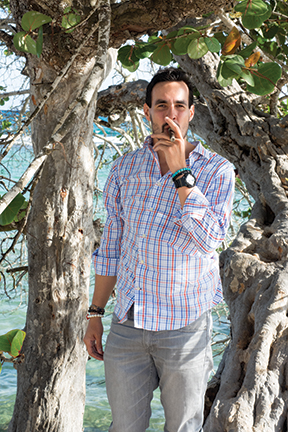
JS – There is an advantage there for the larger companies because of their purchasing power. The advantage of a smaller company is being able to work with people and talk to them one on one. That is why we work with companies that have large amounts of tobacco that allow us to blend the cigars that we need. Large companies also have such a large amount of money, which is an advantage over a smaller operation.
ES – What we saw from the bigger factories and the quality of manufacturing there was a good and bad part for us. In a smaller factory like us, you can focus more on the quality control. I’ll explain myself, as I have always explained, what my father has always done in his life. Dad is an industrial engineer by trade, so he is always breaking everything down and trying to get the better process out of everything. One of the things that he did in his prior position was to implement a quality control through the draw master. He assigned an ideal draw per size, which is the draw that was not too tight or too loose; it was the perfect draw for smoking. He found that when you draw all of the cigars and weigh all of the cigars, it translated to an ideal weight. So, we got to that point at the beginning in the small factory, with six teams of two people. When we came to the ideal draw and ideal weight, we found that there were still cigars that were being rolled too loose and too tight. It is obvious now, but it was not then, that it is because cigars are handmade. It is an art and there is a human factor. You may be rolling the cigars tighter than the next guy is, even though they have the same weight. As a small factory, what my brother and my father did was specify that ideal weight per team. It was not a huge difference in rate, but a couple of grams per person may translate to a tight cigar or to a loose cigar. When you are a small company with 6 bunchers you are able to get that information and personalize it for each employee. The first bunchers ideal weight for a corona may be between 10 & 12, while the second bunchers may be between 9 & 11. That was one of the advantages of having a small factory and working person to person. We were able to get all of that information and work with each of the teams directly, versus working with 1500 employees where you cannot sit down with each employee individually. Originally, my father, being an industrial engineer was talking to the rollers in technical language such as ‘standard deviation’, at which point I let him know that they were not going to understand those terms. They are great cigar makers who are the soul of the company but they are not engineers. He then took standard deviation and began describing it as a shotgun. For instance, “You want your weight always to shoot the same place like a rifle. Not like a shotgun which is shooting everywhere – always like a rifle shooting in one place.” After a month went by, one of the bunchers came in and asked what his standard deviation was. The benefits of a smaller working environment became clear; it is what you get when you can speak to everybody at the same time without any bridges. The negative side is what Dad was saying; your cash flow and your overhead. For us our overhead was killing us. It was a huge amount of rent because we are in a touristy area, and being able to maintain the amount of employees and having the production that you need. In able to maintain the employees you have to have the sales, in order to have the sales you have to have the tobacco and so on. It was the cash flow and overhead as a small factory that was really tough. That is where my dad was saying that we got hurt because we wanted to keep all of the employees and work with them until the end, but we were forced to downsize in order to stay within our limitations.
CP – When you blend cigars, what do you hope to accomplish in that particular blend? Do you blend every size to taste the same or does every size bring something different?
JS – Matilde took us close to eight months to develop. Today, it is a very good cigar. I think that this one here, the new Matilde Oscura, is going to be for people who know their taste because they can appreciate it. I love Matilde in the sense that it is so complex and sweet. So, what we do is to start by looking into tobaccos that I like and say, “I remember that the Brazilian tobacco is sweet and nice.” So, we put away some Brazilian. Then we say, “There is a crazy guy in Santiago who has a new seed coming from the industry and I like the #3 grade, it was fabulous.” So, we put some of that away as well. The direction for me, with the new Oscura, was to look for strength, based on marketing, as well as looking for aromas. The new Oscura would have aromas from 1 to 10, in about the 5 to 6 range. The original Matilde Renacer would be in the 8 to 9 range. However, the strength of the Oscura would be around a 7 to 8, while the strength of the original Matilde would be less than that. However, in the end we blend cigars that we like. Hopefully you will like it, but if not there are many other cigars in the market.
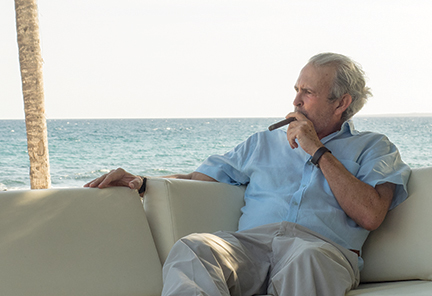
ES – One of the things that we were doing with Matilde Renacer was to, for the blend and the filler, use the same proportion. The thing that was going to change was the binder, wrapper and proportion. With the Renacer the wrapper added a lot of the flavor to that cigar. It was a big change from the corona to the toro. My dad and brother had a crazy idea and said, “Well, if the wrapper is adding a lot of flavor to that corona and it is changing so much between sizes, why not use the second cut of the wrapper and using it as a double binder.” So, after we started producing, we started experimenting on the larger ring gauges. Using the second cut of the wrapper that was not going to be used as the double binder to try and make it a little closer to the smaller ring gauges to bring consistency. It is something that we are not currently doing, but maybe in the future we might try to implement that because it would be very cool to have the same blend tasting very similar throughout all of the sizes.
CP – I don’t think many people realize how hard that is to accomplish. I think most just assume that because it is the same tobaccos together it will taste the same.
ES – Yeah! 1 + 1 = 2… hahaha. It is a work in progress. Hopefully in the future we will be able to do that and make the toro much more similar to the corona so that you are simply looking for a different length of smoke. At the end of the game that really changes, it is the intake of air and the proportions of the wrapper/binder to the filler. The filler will always be the same proportions, but it will always be half of a leaf of your binder and half a leaf of your wrapper. Frankly, I would love to have the Matilde Renacer taste the same the whole way through. It’s extremely hard, but hopefully in the future we may be able to get to do that.
CP – When you go for a cigar, do you have a particular size that you like to smoke?
JS – My favorite size is a toro and the corona if I have a small time available. When I originally developed the Seijas Signature it began as a toro.
ES – Personally, I like smaller ring gauges because I am a very slow smoker. If I get a bigger cigar it will take me too much time. It takes me as long to smoke a corona as it would take a normal smoker to smoke a 60 ring gauge.
CP – How large would you like your company to grow? Would you prefer for it to grow to an enormous size or maintain the boutique size?
JS – My ideal size is to start with a small group of people and continue to grow as long as we can work with the people directly. We must also keep our standards and will grow until things begin to go wrong. As long as we can show that there is a need, and that we are maintaining our methods we will grow. That is our limit.
ES – What I want to get to is a point where we have a large amount of sales but can keep all of the employees together in the same place and be able to do other things. When you grow too big work seems to consume you. I would like to grow to a point where you still love what you do. I do not want to get so big that everything becomes work.
JS – Life is to have fun. You must have jokes, and have friends.

OLYMPUS DIGITAL CAMERA
CP – What do you each like to do in your free time?
JS – I play golf and use to hunt.
ES – I usually travel around the Dominican. It is a beautiful country, so I like to enjoy it. There is so much to do in our country that sometimes it’s embarrassing that people from the States and other countries know more about the Dominican Republic than Dominicans do. About 5 years back, I said, “It is there, so I’m going to go.” Most of the time with my girlfriend, we like to find beaches and travel around the country for a few days.
CP – Can you tell us a bit about your new factory?
ES – We recently moved our production to Santiago leaving our former factory within a tourst site. This serves as a place for education and promotion. Whenever a bus comes into the city with tourists it comes to our factory. We have an area that tells the history of tobacco in the country. There are multiple types of tobacco showcased and we have an actual tobacco growing area so that people can see the types of tobacco. We have a pilon and many other areas. When a tour guide arrives he can start at the beginning of the tobacco growing through the fermentation and other processes. Then we showcase the strengths and burning times of various parts of the plant. Then the different sizes and parts of various sizes of cigars and then on from there we move to the physical process of rolling the cigars and finally packaging. For smaller tour groups, usually myself or my dad will sit down with the group and go through blending, rolling and the various other parts of cigar production. They can try the blends and the various aspects of the blends, and we end up spending 1 to 2 hours with them. One of the very rewarding things that we got from that is that it’s simple and people appreciate it. Cigars are so undervalued in what it takes to make them and how many hands touch them. You guys know it because you have been to factories and have seen the process, but most smokers just know that the cigar is worth $10 or $14 or $20 but they don’t see what is going in there and the time that the tobacco is aged or any of that. One of the cool things about this place is that they are finally able to see it. Obviously not the aging but they are able to see the manufacturing and what it took to make that cigar. A cigar smoker comes out of it knowing what went into it. A non-smoker might come out and see that a cigar is not machine made, it is not like a cigarette, and it is an art, something different, that this was very rewarding to see. In the future, we hope to continue the growth of the factory while still allowing us to grow the brand through travel and promotion.






